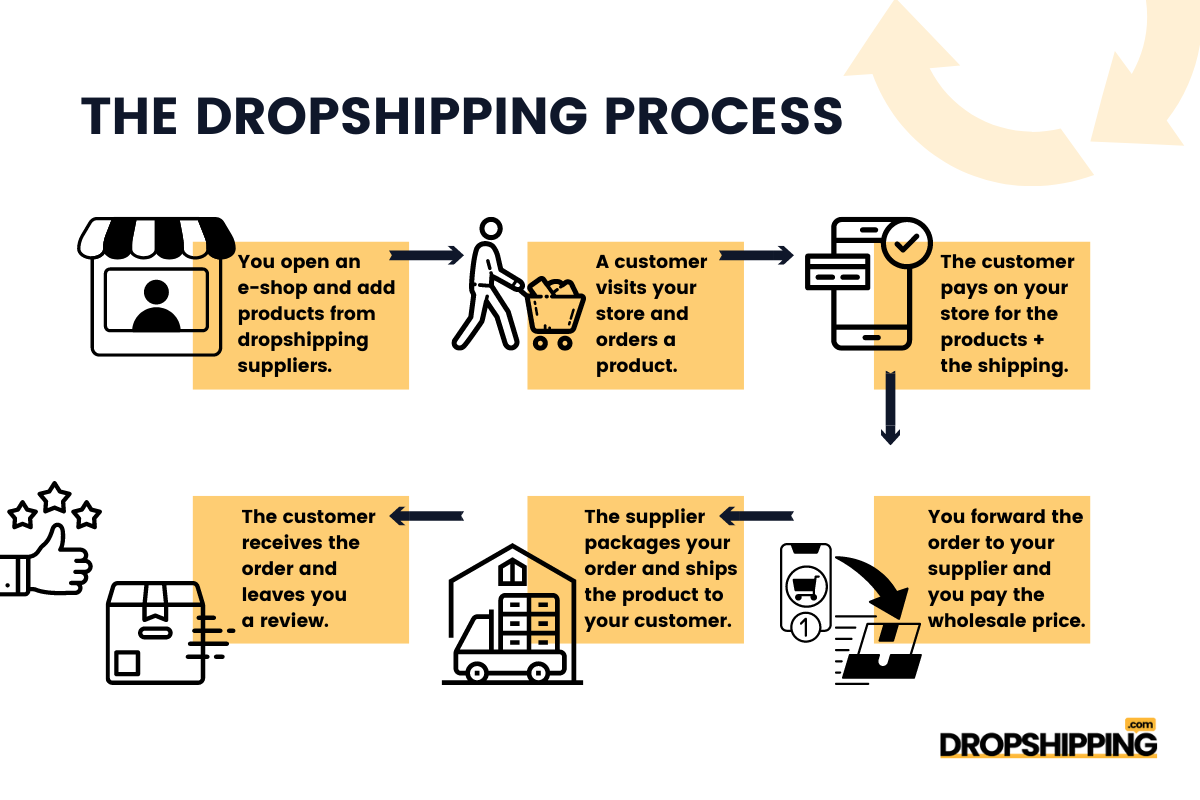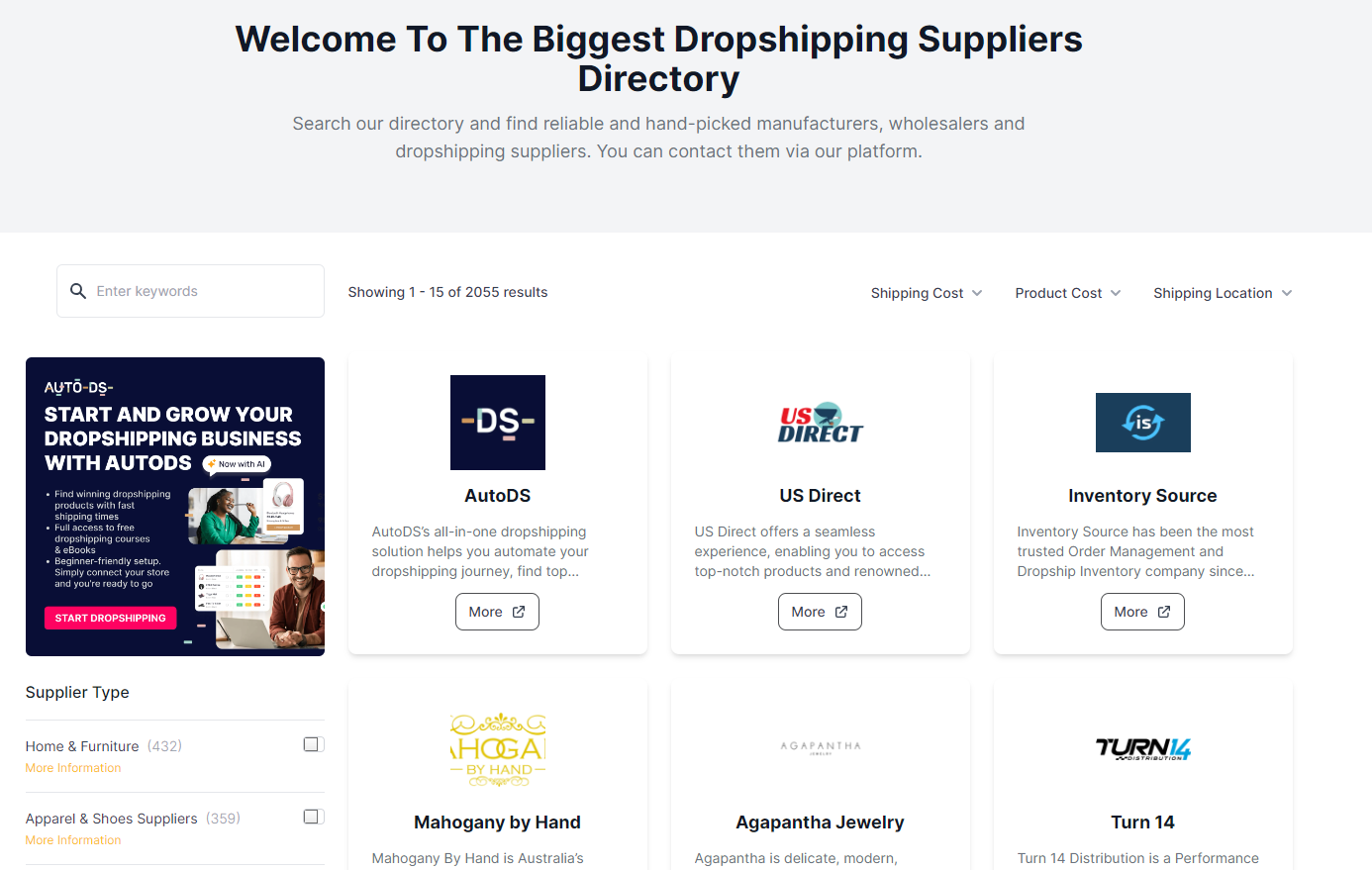Sustainable Ecommerce Shipping in Dropshipping: How UK-China Freight Forwarders are Making a Difference
In the rapidly expanding world of online retail, sustainable ecommerce shipping emerges not just as a trend but as a necessity.
As businesses globalize, the demand for efficient, cost-effective, and environmentally friendly shipping solutions has never been higher.
Particularly in the realm of dropshipping, where products often travel extensive distances from manufacturers to consumers, the role of freight forwarders, especially those facilitating UK-China routes, is pivotal.
This article delves into how these freight forwarders are revolutionizing the industry.
Also, we will discuss integrating sustainability into their operations, and setting new standards for eco-conscious logistics.
Table of Contents
- Understanding Ecommerce Shipping and Dropshipping
- Dropshipping Times from China
- The Role of Experienced China Freight Forwarders
- Alibaba vs. AliExpress for Dropshipping
- Transitioning from Dropshipping to Full-time E-commerce
- The Importance of Sustainability in Ecommerce Shipping
- Navigating the Regulatory Seas: Understanding the Impact of Environmental Legislation on Ecommerce Shipping
- The Green Advantage: How Sustainable Shipping Shapes Consumer Choices
- How UK-China Freight Forwarders are Making a Difference?
- Technologies and Innovations Supporting Sustainable Shipping
- Practical Tips for Dropshipping Businesses to Enhance Shipping Sustainability
- Sustainable Strategies for Dropshipping Businesses
- Conclusion
Understanding Ecommerce Shipping and Dropshipping
Ecommerce shipping encompasses the entire process of sending goods from suppliers to customers, a backbone of the online retail ecosystem.
In the digital age, consumers expect fast, reliable, and increasingly, eco-friendly delivery options. Thus, this pushes retailers to seek innovative pallet shipping solutions to ship large quantities of goods.
Dropshipping stands out as a unique business model in this landscape. Retailers sell products without holding inventory, as items are shipped directly from suppliers to customers.

This model, while reducing storage and handling costs, often complicates the shipping process. Thus, this happens due to the international nature of many supplier-retailer relationships, particularly between the UK and China.
These complexities highlight the critical role of freight forwarders who specialize in navigating the intricate logistics of international shipping, ensuring goods move efficiently across borders.
💡 Why not check out our guide on Dropshipping business ideas >
The growth of ecommerce is undeniable, with more consumers turning to online shopping each year. This shift has led to an increased volume of shipments worldwide, underscoring the urgency for sustainable shipping practices.
As the industry evolves, the sustainability of these shipping methods becomes a focal point. Hence, this challenges businesses to innovate and adopt practices that reduce environmental impact without compromising service quality.
We will explore the importance of sustainability in ecommerce shipping. So, let’s learn how UK-China freight forwarders are leading the charge in implementing eco-friendly practices. Also, we will review the technologies that support these initiatives.
We aim to provide ecommerce businesses with actionable insights to enhance their shipping sustainability.
👉 Read my SourcinBox Review: Solution For Sourcing Products From China?
Dropshipping Times from China
The allure of dropshipping from China lies in its vast selection of products at competitive prices.
👉 Check out the 11 Best China Dropshipping Suppliers [General & Niche Dropshippers].
However, extended shipping times pose a significant challenge, with deliveries often taking several weeks. Thus, this can deter customers and complicate the business model for entrepreneurs.
- Extended delivery times
- Impact on customer satisfaction
- Challenges for dropshipping entrepreneurs
The Role of Experienced China Freight Forwarders
Engaging experienced freight forwarders can mitigate the issue of long shipping times. These professionals specialize in navigating the complexities of international logistics, offering solutions that can streamline the delivery process.
- Expertise in Less Than Container Load (LCL) shipping
- Navigation of logistics and customs procedures
- Potential to reduce shipping times
Alibaba vs. AliExpress for Dropshipping
Choosing the right platform between Alibaba and AliExpress can significantly affect your business strategy, especially when considering inventory investment and shipping times.
Alibaba for E-commerce Wholesale Volumes

Alibaba is ideal for businesses ready to invest in wholesale quantities, offering lower prices for larger orders but requiring a higher initial investment.
- Lower per-unit costs for bulk orders
- Higher initial investment
- Best suited for established businesses
👉 Read about Alibaba Dropshipping: A Step-by-Step Guide For Beginners.
AliExpress for Starting Out

AliExpress caters to entrepreneurs who are new to dropshipping. Thus, it allows for smaller orders and offers faster shipping options for some products.
- Low initial investment for small orders
- Some sellers offer 12-14 days guaranteed delivery
- Ideal for testing products and market response
👉 Check out How to Reduce AliExpress Shipping Times in 2024.
Read our guide on Dropshipping suppliers >
Transitioning from Dropshipping to Full-time E-commerce
Starting with dropshipping and gradually moving to bulk purchasing can be a strategic approach to growing your e-commerce business.
- Begin with low-risk dropshipping on AliExpress
- Scale up to wholesale purchases on Alibaba for better margins
- Develop a strategic plan for growth, including market research and logistics management
While the long shipping times from China can be daunting, strategic use of freight forwarding services and choosing the appropriate platform between Alibaba and AliExpress can help navigate these challenges.
So, starting small with dropshipping and gradually scaling to full-time e-commerce through bulk purchases can optimize profit margins and facilitate business growth.
The Importance of Sustainability in Ecommerce Shipping
The call for sustainability in ecommerce shipping is louder than ever. With the global ecommerce market continuously expanding, the environmental impact of shipping operations can no longer be overlooked.
The logistics sector, a significant contributor to global carbon emissions, faces immense pressure to adopt greener practices.
Moreover, sustainable shipping goes beyond reducing carbon footprints. It encompasses a holistic approach that includes minimizing waste, optimizing logistics, and using eco-friendly materials.
Why Sustainability Matters
- Environmental Protection: Reducing emissions and waste is crucial in combating climate change and protecting natural ecosystems.
- Consumer Demand: Increasingly, consumers prefer to purchase from brands that demonstrate environmental responsibility, making sustainability a competitive advantage.
- Regulatory Compliance: Governments and international bodies are tightening environmental regulations, pushing companies towards greener practices to avoid penalties.
Sustainability in ecommerce shipping is not just an ethical choice. Also, it is a strategic business decision that aligns with global trends toward environmental stewardship and responsible consumption.
Navigating the Regulatory Seas: Understanding the Impact of Environmental Legislation on Ecommerce Shipping
In the quest for sustainability, ecommerce businesses, and freight forwarders must not only innovate. Hence, they should also navigate through a complex web of environmental legislation and international policies.
These regulations are designed to curb the negative impacts of shipping on the environment and ensure a sustainable future for global commerce.
Here, we dive into the essential legislative frameworks and policies that impact UK-China freight forwarding.
So, we will explore how businesses can adhere to these regulations while pushing forward with their sustainability objectives.
The Regulatory Landscape
The shipping industry, a significant contributor to global carbon emissions, is increasingly under the microscope of international regulatory bodies.
In the UK, the government has set ambitious targets to reduce greenhouse gas emissions, with similar initiatives seen in China as part of its national green development strategy.
These policies directly influence the operations of freight forwarders and ecommerce businesses, making compliance a top priority.
Key Legislation Affecting Ecommerce Shipping
- International Maritime Organization (IMO) Regulations: Aimed at reducing the shipping industry’s carbon footprint, these include caps on sulfur emissions and plans for carbon neutrality by the mid-21st century.
- EU Emissions Trading System (ETS): Although the UK has left the EU, it has established its own ETS. This affects shipping routes between the UK and China.
- China’s Green Freight Initiatives: Encompassing a range of policies aimed at promoting the use of clean energy and reducing emissions from logistics operations.
Strategic Compliance and Sustainability
To align with these regulations, businesses must adopt strategies that not only comply with current laws but also anticipate future legislative changes. This includes investing in cleaner shipping technologies, optimizing logistics to reduce emissions, and engaging in carbon offset programs.
By proactively addressing these regulatory requirements, companies not only mitigate the risk of penalties but also position themselves as leaders in sustainable ecommerce shipping.
The Green Advantage: How Sustainable Shipping Shapes Consumer Choices
As awareness of environmental issues grows, consumer preferences are increasingly leaning towards sustainability, impacting the way ecommerce businesses approach shipping.
We delve into how sustainable shipping practices impact consumer purchasing behavior, illustrating that embracing environmental responsibility is not only good for the earth but also advantageous for business success.
The Shift in Consumer Preferences
Recent surveys indicate a significant portion of consumers, especially millennials and Gen Z, prefer to shop from brands that demonstrate environmental responsibility. This shift is pushing ecommerce businesses to rethink their shipping strategies, recognizing that sustainability can indeed be a competitive advantage.
Sustainable Shipping and Purchasing Decisions
- Eco-friendly Packaging: Consumers are more likely to choose products with minimal, recyclable, or biodegradable packaging.
- Carbon Neutral Shipping: Offers from businesses that provide carbon-neutral shipping options often see higher customer loyalty and satisfaction rates.
- Transparency and Sustainability Claims: Brands that clearly communicate their sustainability efforts, including the use of sustainable freight forwarders, gain consumer trust and preference.
By aligning shipping practices with consumer expectations for sustainability, ecommerce businesses can not only enhance their brand reputation but also drive sales, proving that environmental responsibility and business success can go hand in hand.
How UK-China Freight Forwarders are Making a Difference?
Freight forwarders in the UK-China trade lane play a crucial role in the global supply chain. And, their move towards sustainable practices significantly impacts the overall environmental footprint of international trade.
💡 Tip: Learn How To Dropship From China to USA [Best Practices].
By implementing innovative strategies and leveraging technology, these forwarders are setting new standards for eco-conscious shipping.
Innovative Strategies for Sustainability
- Route Optimization: Advanced software algorithms calculate the most efficient shipping routes, reducing fuel consumption and emissions.
- Eco-friendly Packaging: Moving away from traditional packaging materials to biodegradable, recycled, or reusable options significantly lowers waste.
- Energy-efficient Transportation: Investing in modern, fuel-efficient vehicles and exploring alternative fuels like electric or hydrogen-powered transport modes.
- Collaboration for Consolidation: Working with other businesses to consolidate shipments, maximizing container space, and reducing the number of trips needed.
These examples highlight the proactive steps being taken to ensure that the shipping process, especially in the high-volume UK-China corridor. Hence, it becomes more sustainable.
Technologies and Innovations Supporting Sustainable Shipping
The landscape of ecommerce shipping is evolving rapidly, with sustainability at the forefront of this transformation. In addition, it is strongly supported by technological advancements and innovations.
These technologies not only enhance efficiency but also pave the way for greener shipping methods.
🔸 Key Technologies
- AI and Machine Learning for Logistics Optimization: AI algorithms predict shipping volumes, optimize routes, and manage inventory, reducing unnecessary shipping and storage.
- Blockchain for Transparency: Blockchain technology ensures the traceability of products and the sustainability of supply chains, encouraging responsible sourcing and production practices.
- Electric and Autonomous Vehicles: The development of electric freight vehicles and drones for last-mile delivery reduces reliance on fossil fuels.
- Advanced Packaging Solutions: Innovations in packaging, such as mushroom-based materials and algae-based plastics, offer new ways to reduce waste and carbon footprints.
By adopting these technologies, UK-China freight forwarders not only contribute to environmental sustainability but also improve their operational efficiency and meet the evolving demands of consumers and regulators.
🔸 Leveraging Blockchain for Enhanced Transparency and Efficiency
As we look to the future of ecommerce shipping, blockchain technology emerges as a transformative tool for enhancing transparency, efficiency, and trust in the supply chain.
This decentralized ledger technology offers an unalterable record of transactions and movements. Thus, it makes it ideal for tracking the journey of goods from manufacturer to consumer.
In the realm of sustainable shipping, blockchain can verify the authenticity of eco-friendly claims, ensuring that products are sourced, manufactured, and transported according to the highest environmental standards.
🔸 Blockchain’s Impact on Ecommerce Shipping
- Traceability: Blockchain provides a transparent and tamper-proof record, allowing consumers and businesses to trace the lifecycle of a product, including its origins and the sustainability of its shipping route.
- Reduced Fraud and Errors: By automating and recording every transaction, blockchain minimizes the risk of lost, counterfeit, or mistakenly shipped goods, enhancing overall supply chain efficiency.
- Sustainability Verification: Consumers increasingly demand proof of sustainable practices. Blockchain can offer irrefutable evidence of a product’s environmental footprint, from reduced carbon emissions to ethical sourcing.
Integrating blockchain into ecommerce shipping not only aligns with consumer demands for transparency but also supports the industry’s shift towards more sustainable and responsible practices.
As this technology becomes more accessible and understood, its adoption within the UK-China trade corridor and beyond could set new standards for accountability and sustainability in global ecommerce shipping.
As we steer towards these sustainable horizons, businesses that invest in green technologies and practices today will be the leaders of tomorrow.
By embracing innovation and sustainability, ecommerce companies can ensure their operations are not just environmentally responsible but also aligned with the values of their customers and the demands of a rapidly changing world.
Practical Tips for Dropshipping Businesses to Enhance Shipping Sustainability
Dropshipping businesses, regardless of their size, can take meaningful steps to contribute to a more sustainable future.
By integrating green practices into their shipping operations, businesses can not only reduce their environmental impact but also potentially lower costs and improve customer satisfaction. Here are actionable tips to consider:
Sustainable Strategies for Dropshipping Businesses
🔸 Optimize Inventory and Shipping Management
- Demand Forecasting: Use data analytics for precise demand forecasting to avoid overproduction and excess inventory, leading to more sustainable shipping practices.
- Localized Suppliers: Prefer suppliers located near your main customer demographics to shorten delivery routes and lower carbon emissions, making each delivery more efficient.
Foster Sustainable Supplier Relationships
- Eco-friendly Suppliers: Choose dropshipping suppliers committed to sustainability in their manufacturing and packaging processes, including the use of renewable resources and minimal plastics.
- Supplier Sustainability Audits: Regularly assess suppliers’ environmental practices to ensure they meet your sustainability criteria, offering support for any needed improvements.
Also, you should use inventory management tools to automate this process and keep better track of your inventory levels. For example, I recommend you try Inventory Source.👇

🔸 Streamline Dropshipping Operations
- Direct Packaging Guidelines: Work with your suppliers to set clear, eco-friendly packaging standards, promoting the use of materials that are biodegradable, recycled, or minimal to lessen waste.
- Packaging Innovation: Motivate suppliers to seek out and use innovative, sustainable packaging solutions that offer protection without environmental compromise.
- Minimalist Design: Employ a minimalist approach in packaging design, using the smallest amount of material necessary to ensure product safety, thereby reducing waste.
- Multi-functional Packaging: Innovate packaging that has additional uses post-delivery, such as storage or decorative purposes, adding value for customers and encouraging longer-term use.
For example, Dropshipping.com offers a huge list of over 2000 dropshipping suppliers. You can sort them by category, niche, or filters like shipping and product costs.

And guess what? It doesn’t cost a thing! Plus, you can ask the Dropshipping.com team to reach out to suppliers for you.
🔸 Embrace Alternative Delivery and Return Methods
- Bike and Electric Vehicle Delivery: Where feasible, use suppliers with delivery services that rely on bicycles or electric vehicles for last-mile delivery to minimize emissions.
- Consolidated Shipments: Encourage customers to consolidate orders into fewer shipments, reducing the frequency and thus the carbon footprint of deliveries.
- Eco-friendly Returns: Find out from your suppliers how they deal with returns and what happens to the defective items.
Promote Sustainability Through Engagement
- Customer Loyalty Programs: Create loyalty programs that reward sustainable choices, such as opting for eco-friendly shipping options or selecting sustainable products.
- Educational Campaigns: Run campaigns to educate customers on the environmental impact of their purchases and how they can opt for more sustainable choices.
Implement Green Practices Across Operations
- Green Web Hosting: Choose web hosting services powered by renewable energy to lessen the carbon footprint associated with your online presence.
- Sustainable Online Presence: Ensure that all aspects of your digital operations, from the hosting platforms to the digital documentation, reflect your commitment to sustainability.
By integrating these strategies, dropshipping businesses can significantly enhance their sustainability. These measures not only contribute to the health of the planet. Also, it resonates with increasingly environmentally aware consumers, fostering a brand image that’s both responsible and appealing in today’s market.
💡 Tip: Learn about Dropshipping Returns: How To Set Up Your Returns & Refunds? [Full Guide].
Conclusion
As the ecommerce landscape continues to evolve, sustainability becomes increasingly central to business operations and consumer expectations.
UK-China freight forwarders are leading by example, demonstrating that integrating eco-friendly practices into shipping operations is both feasible and beneficial. Ecommerce businesses have a pivotal role to play in this movement, with numerous opportunities to enhance their shipping sustainability.
We encourage ecommerce entrepreneurs and businesses to assess their current shipping practices. Also, they should explore the tips provided, and take proactive steps toward sustainability.
By doing so, they can contribute to a healthier planet, meet consumer demands for responsible practices, and potentially discover new efficiencies and cost savings.
By prioritizing sustainability in shipping practices, ecommerce businesses can make a significant impact on the environment while fostering a positive brand image and building a loyal customer base.
The journey towards green shipping is a collective effort, and every step, no matter how small, counts towards a more sustainable future.










![The Top 21 3PL Companies Compared [2024 List & Guide]](https://images.weserv.nl/?url=https://prod-dropshipping-s3.s3.fr-par.scw.cloud/2024/03/Frame-3922469.jpg&w=420&q=90&output=webp)